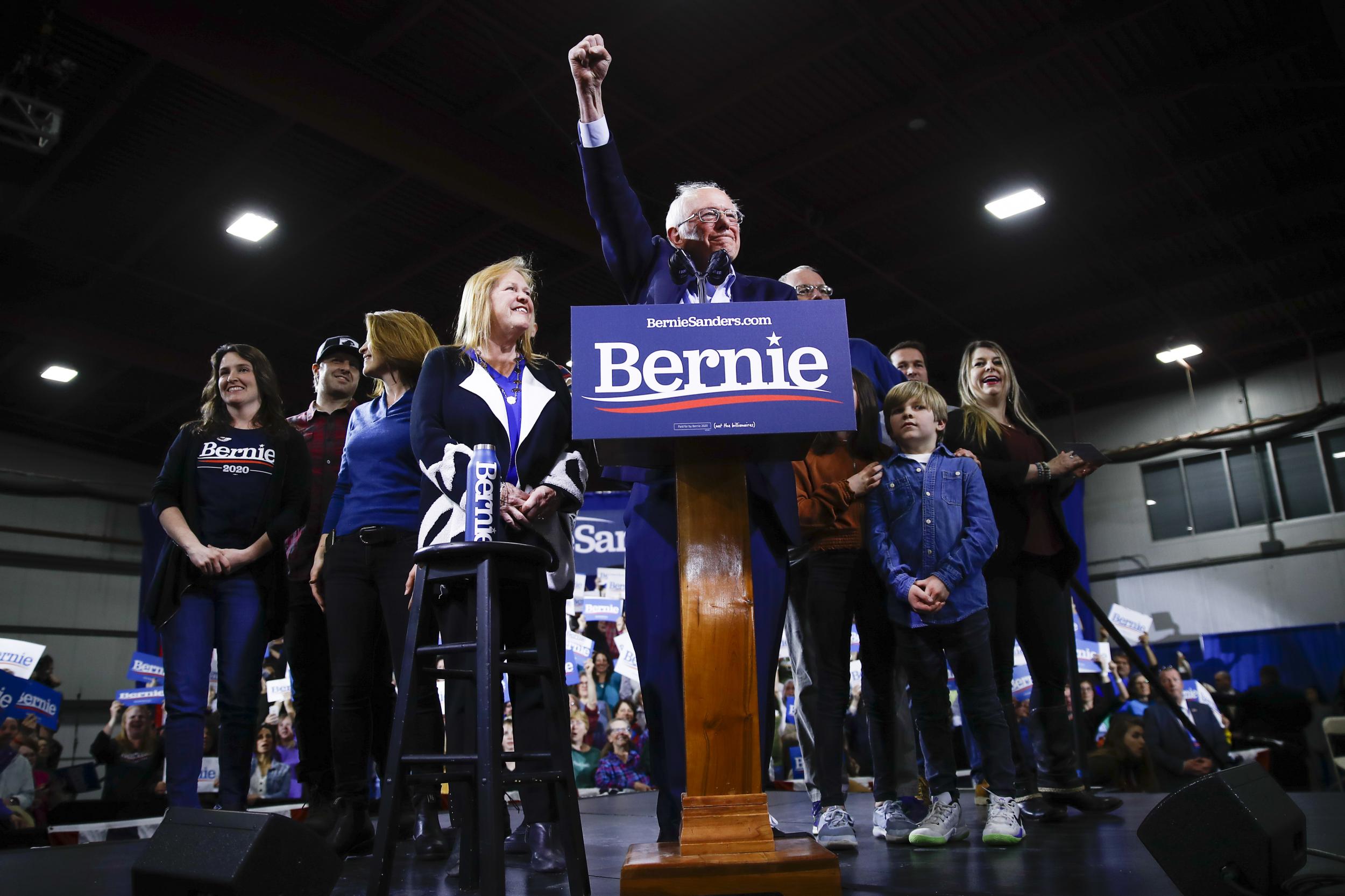Bernie Sanders and Jeremy Corbyn are both down – but that doesn’t mean the movements they started are out
The question is whether the younger enthusiasts for these ideas will keep the faith as they grow older, writes Mary Dejevsky


Joe Biden, the former US vice president, pulled off the seemingly impossible this week, when he caught up and overtook Bernie Sanders in the race for the Democrat presidential nomination. Biden’s prospects had been practically written off after swingeing victories by Sanders in the early caucuses and primaries.
Now Biden is back with a vengeance and, while the contest still has weeks to run, his momentum looks hard to reverse. He went into Super Tuesday with the endorsement of the early favourite, Pete Buttigieg, and goes into the next votes on 10 March with Michael Bloomberg, the latest and potentially most valuable dropout, signed up too.
Biden’s comeback suggests three things about the state of US politics in the spring of this election year. The Democrats remain as divided as they were four years ago between the radical left (in US political terms) and the centre, but when presented with a direct choice between left and centre – without any of the shades in between – a majority of primary voters seems to prefer to play safe.
Second, those same voters appear to have made the judgement that the safer, more centrist candidate has a better chance of beating the often flaky populist Donald Trump. And third – amazingly – age does not matter. At 77, Biden is four years older than Trump, and just a year younger than Sanders. Barring new surprises on the way, the next US president will be nudging 80 by the time his four years are up. Whatever happened to JFK, Bill Clinton and the American voters’ romance with youth?
There is one thing, however, that Biden’s comeback may not mean. Despite a widespread view that the likely eclipse of Sanders’ White House bid spells the end not just of his presidential ambitions, but of his particular brand of US socialism, this is not necessarily so. And there is a parallel to be drawn here with Jeremy Corbyn and the state of the left in the UK. Corbyn himself may be down and out – or at least he will be, once the new party leader is announced next month. Nor, it seems, with Keir Starmer heading the field, will his successor come from his wing of the party. The future of what he stood for, however, the constellation of leftist policies that he campaigned on and constitute “Corbynism”, could be another matter.
It is worth stressing: there will be no comeback for Corbyn, as there was for Bernie Sanders at the start of this year’s US primary season. After Labour’s trouncing by Boris Johnson’s Conservatives at the last election, the blame fell squarely on the party leader. Not only had he led Labour to one of their worst defeats on record, but a whole swathe of seats – the so-called red wall in the Midlands and the North – had dramatically forsaken Labour for the first time.
In all the post-election analyses of how and why, two factors have been identified in particular: the party’s equivocation on Brexit – compared with Johnson’s unambiguous “Get Brexit done” – and the character and policies of Corbyn. Of these, the Corbyn factor was seen as decisive.
Even many lifelong Labour voters apparently found it impossible to stomach the prospect of Jeremy Corbyn at No 10. Some of Labour’s policies – which included a huge programme of renationalisation, free broadband for all and a host of other giveaways – were simply dismissed as unrealistic, even irresponsible, by large numbers of Labour voters. However much people might have supported the renationalisation of the railways, say, and the abolition of university tuition fees, there was a widespread acknowledgement that profligacy was no way to run the country.
This, however, is to simplify what was a very mixed national picture. Corbyn – and Corbynism – were undoubtedly big factors in Labour’s defeat. But how then had it come about that Corbyn – and Corbynism – did so well at the previous election, just two and a bit years before, depriving Theresa May of her majority? It is true that Labour did not win, and then its strength as an opposition was dissipated by the party’s internal divisions over Brexit. But it did much better than expected, and Corbyn attracted hundreds to his rallies, especially new and young voters on the left.
One big difference between the two elections was the frustration that had built up among Brexit voters after three years in which their referendum victory, as they saw it, risked being thwarted by parliament. I tend to think that the support for Brexit among sections of Labour voters – primarily along that red wall – offers more of an explanation for the party’s defeat – than either Corbyn or Corbynism. In Labour Remain territory, yes, Corbyn and his promised looseness with the public purse were undoubtedly disqualifications for some voters. Elsewhere, though, Labour held onto seats that it would have lost with a swing even half that in the red wall areas, and one London constituency – Putney – was a Labour gain.
Subsequent analysis showed a clear generational split. It has long been a feature of UK elections that the older the voter, the more likely he or she is to vote Conservative. This time around, however, there was a similar split within the Labour vote. Despite evidence that the Corbyn enthusiasm of 2017 had to an extent worn off by 2019, young voters appear much more likely than their elders to have remained loyal to Corbyn. For some, at least, he was as much of an asset as he was a liability to others.
Which is why, although Corbyn’s days as party leader are numbered, it might be too early to write off Corbynism as a fleeting revival of old-style socialism with Marxist echoes. The same applies in the United States, where a similar generational split can be observed between supporters and opponents of Bernie Sanders. Both four years ago and now, it would seem, there is a constituency of younger Democrats who have acquired a certain sympathy for the left.
Now the US and UK political spectrums are very different, and Sanders’ electoral platform, while extortionately expensive to implement, offered socialised healthcare and free college tuition, but stopped short of the nationalisations that featured in Jeremy Corbyn’s manifesto. Nonetheless, his showing has to be counted as a success, even if he loses to Joe Biden.
For a candidate so far to the left in US politics to challenge so convincingly for the Democratic nomination four years apart, with his appeal greatest among young people, suggests that a US brand of socialism entering the political mainstream might not be the impossibility it has seemed for the best part of 70 years.
The question on both sides of the Atlantic, however, is the same. Will these younger enthusiasts for ideas that are far to the left of what has generally proved electable keep the faith as they grow older? Could it be that as voters whose formative experience was of the global financial crisis, in two countries wedded at the time to free-market capitalism, they are committed to finding another way? And will the spark ignited in this new generation by politicians of an older stamp in their seventies stay alight, or will the young voters who became engaged in politics for the first time follow the time-honoured path to the centre and the right?
It is too early to know. Even as Bernie Sanders and Jeremy Corbyn take their final bows, however, it is not too early to hazard that, while these two politicians may have been rejected, the new order they called for in their different ways might be embraced by voters in elections to come.
Join our commenting forum
Join thought-provoking conversations, follow other Independent readers and see their replies
Comments